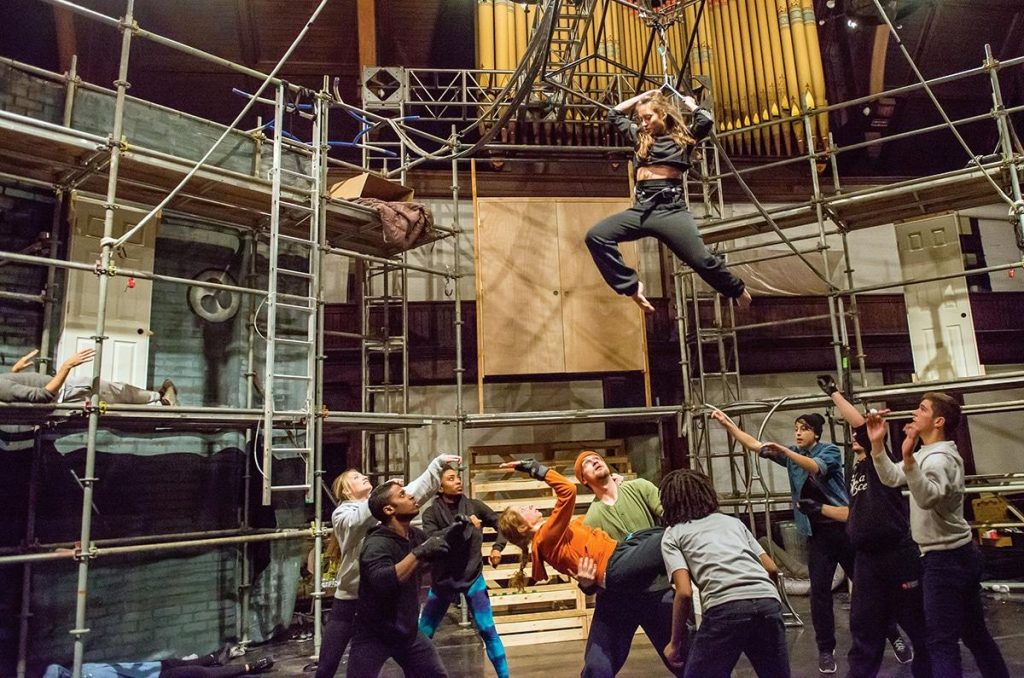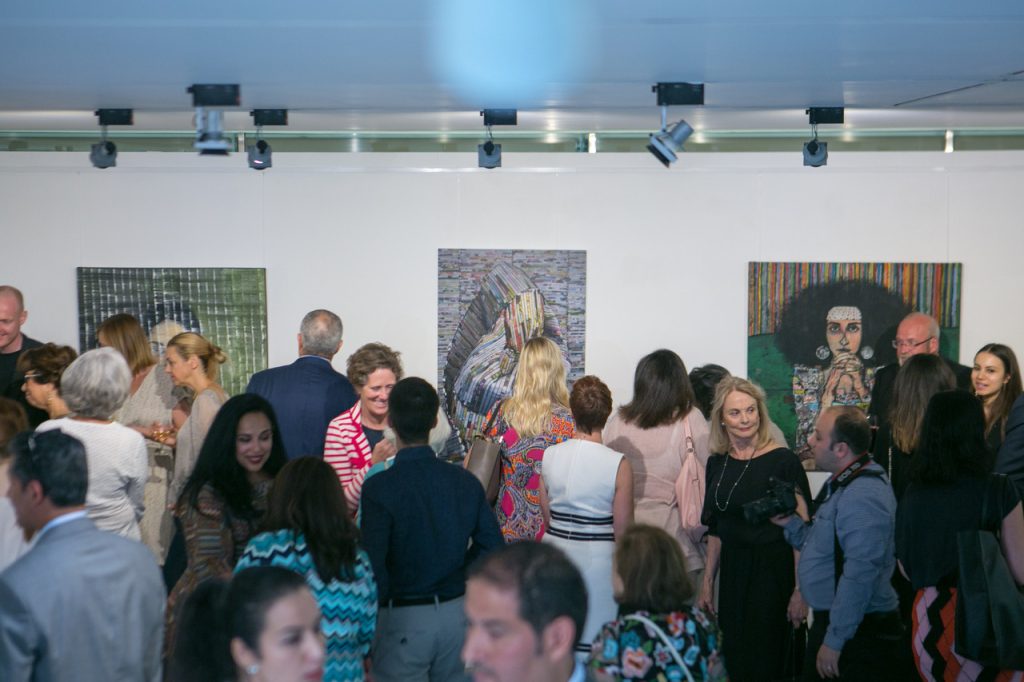We Die. That May Be the Meaning of Life: An Interview with Jen Bailey
November 7, 2021

“Remember, the elements with no more life in them support the elements that are still living. Therefore, don’t skimp on the bark and go straight for the orchids. Each element is necessary to bring balance to your lei.”
These were the instructions given to me and three other grieving Black women in a lei-making workshop in Honolulu earlier this year. We had come to Hawaii to take part in a grief retreat that sought to guide participants in “grieving well” after experiencing loss.
It is said that when one comes to Hawaii, the first thing one should do is take in the earth and establish a sense of harmony with the place. Thus we began our journey by taking in a variety of flowers, grasses, tree bark, and leaves to make lei. Lei are not just strings of orchids and plumeria. They often contain hard parts like shells and dead things like bark. When making lei it is important to understand the role each plays in bringing harmony to the design. The beautiful, living parts need to be bolstered by the hard, dead parts for the structure to hold up.
As I sat threading blossoms on strands of dead grass, I came to think of making lei as a metaphor for my grief. Though there is no universal roadmap for navigating grief, IFYC alum the Rev. Jennifer Bailey’s new book, “To My Beloveds: Letters on Faith, Race, Loss, and Radical Hope,” helped me imagine a way forward. Somehow, someway, I needed to take my losses and allow them to shape the new phase of life I was entering. I needed to name what I had lost and listen for what wanted to emerge. Through each of Jen’s letters, readers are reminded that through sharing our vulnerabilities we open ourselves to deeper human connections that can promote our personal healing and expand our appreciation of life and new beginnings.
I spoke with Jen recently about her inspiration for the book and her hopes for those who read it.
Share

Alexis Vaughan: Why did you write this book?
Jen Bailey: The experience of being pregnant during COVID and seeing the level and layers of devastation this pandemic has brought to my communities, especially Black communities, inspired me to finish this book. Being one degree of separation away from so many people who transitioned because of COVID, I became acutely aware that part of my worldview is so deeply shaped by my proximity to death and having lost so many people that I loved early on in my life. I realized through my grief journey that that proximity to death created a deepening appreciation for life and the recognition that grief is not a single event. You don’t just have a funeral and it’s over. Grieving really does reshape our hearts and remake us through the experience. Seeing the mass levels of devastation and loss in the absence of a public narrative or collective space for us to process and memorialize those who transitioned, made it feel like the right time to offer up some of the lessons that I’ve learned about finding hope in the midst of loss.
AV: What does “to grieve well” mean to you?
JB: I’m still figuring that out. This book is partially about me grieving my mom. What I’ve learned over the last five years after losing my mom, grandmother, and several friends is that when we don’t attend to the places of hurt and harm, grief tends to find ways to work itself out regardless. It shows up in our interactions with people in unexpected ways that can potentially cause harm to others. The work of grieving well is about giving oneself (and this is especially difficult for women of color) the permission to say “I deserve a space of grieving. I deserve the opportunity to press pause. I deserve to attend to what is going on in my spirit and my body right now. I deserve the time to pay attention to all that I am grieving.” I think people are afraid of the grieving process because they feel that they will be subsumed by grief and won’t know how to work through it. In my experience of grieving, especially in collective and communal settings, is that when we start to scratch below the surface and unearth what is there, we start to find connections with people that we wouldn’t have anticipated. Unless you tell your stories, and tend to those specific spaces of grief, you could lose a meaningful connection with someone. Loss is an experience that, for better or worse, becomes universal. At some point, everyone loses someone or something that they love. Grieving well feels like a counter-cultural permission to be and sit in the fullness of our humanity and allow it to shape us and transform us through that process
AV: Were there specific religious texts or rituals that helped you navigate your grieving process?
JB: I don’t know if I’ve ever heard a good funeral eulogy that theologically aligned with me, but perhaps this question is best answered in the way I structured the book. There is a Christian narrative of Life –> Death –> Resurrection. In this book I wanted to play with the idea of starting with death instead of life. If we start with death, how does that transform the way we think about resurrection and the way we live after that? The story of Jesus weeping over the death of his friend Lazarus is one of my favorites because it reminds us of Jesus’ deep humanity. It is an invitation for Christians to embody and experience what grief feels like. The music of my tradition has also been a great source of comfort and joy.
AV: You include a powerful letter to MarShawn McCarrel II, a young activist who died by suicide. It is often said that people who advocate on behalf of others hold multiple griefs simultaneously — their own and those of their communities. What did you want to say to this community specifically?
JB: It felt important to me to include this letter. There is a still a lot of stigma in faith communities around seeking professional help for mental health struggles because prayer is our mental health. It is assumed that if you are a person of strong faith, you can just “pray it away.” I wanted to make a larger point that interrogates a mantra I’ve heard so often that “suicide is a permanent solution to a temporary problem.” Well, no. Not if you are a Black person in America! Not if you are a poor person! Not if you are a person who is constantly bumping up against systems that seek to deny the fullness of your humanity. In the same way that our response to systems of inequity has been to reform public policy and reimagine what community life could look like, so too do we need to be as politicized in how we think about healing. Everybody needs a therapist, sure, but if everybody needs a therapist, isn’t that a commentary on what is happening in our society? The weight of the traumas we are carrying is not just our own, it is generational. We know now that trauma alters our DNA and is passed down through the generations, so we need to call out the systems that allow people to be eaten up by trauma. True healing considers the particularities of where it hurts. Part of what is needed now is a more collective attention given to what is happening in society that allows people to continue to be eaten up and spit out by systems that don’t love them back.
AV: What is your hope for this book?
JB: I hope that the letters in this book as they are written can be a starting point for conversations that invite people deeper into their own stories and those of their loved ones. Hopefully there will be something that resonates and inspires everyone who reads the book to revisit their own story and share it with someone else.
Jen Bailey’s new book “To My Beloveds: Letters on Faith, Race, Loss and Radical Hope” is available now.



